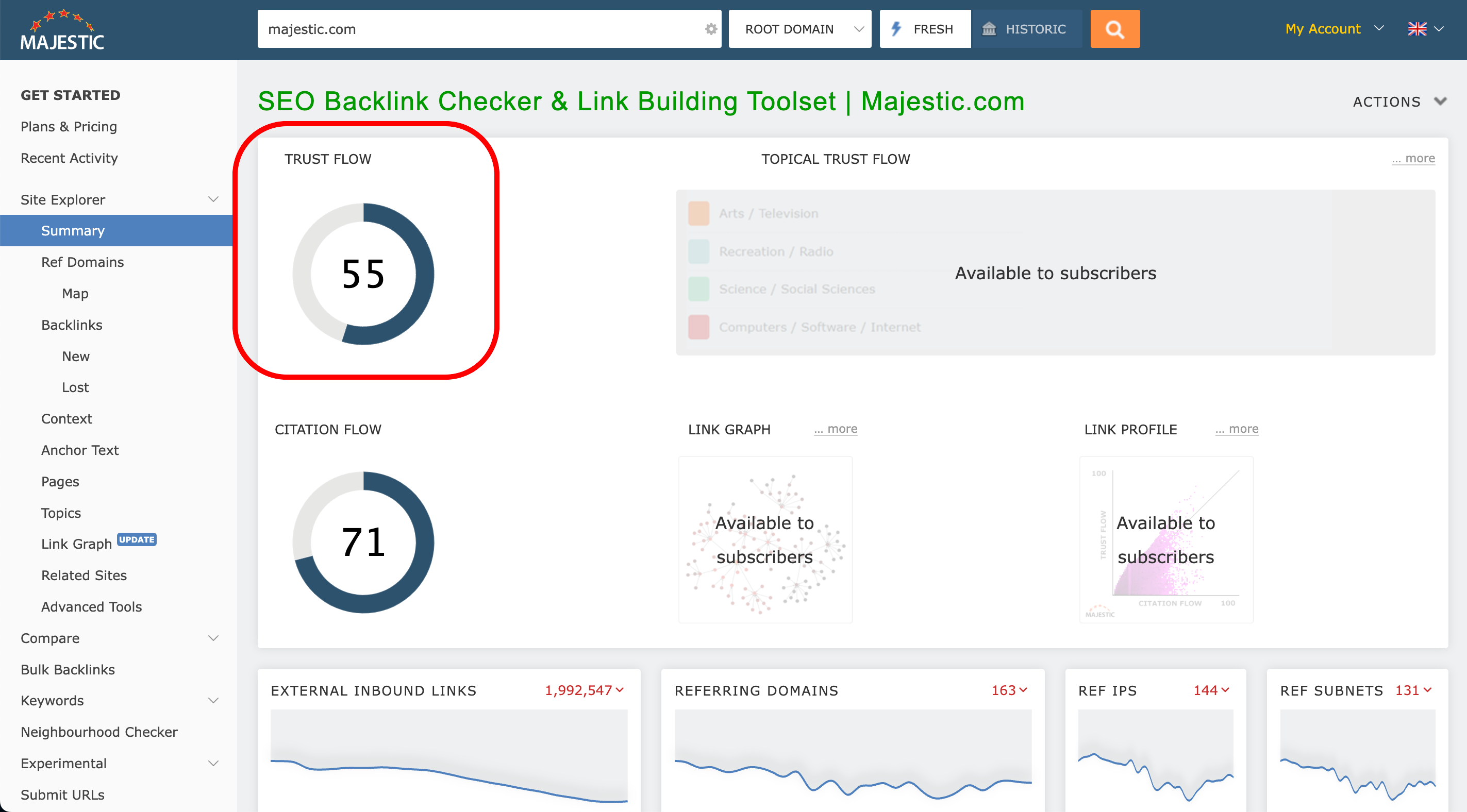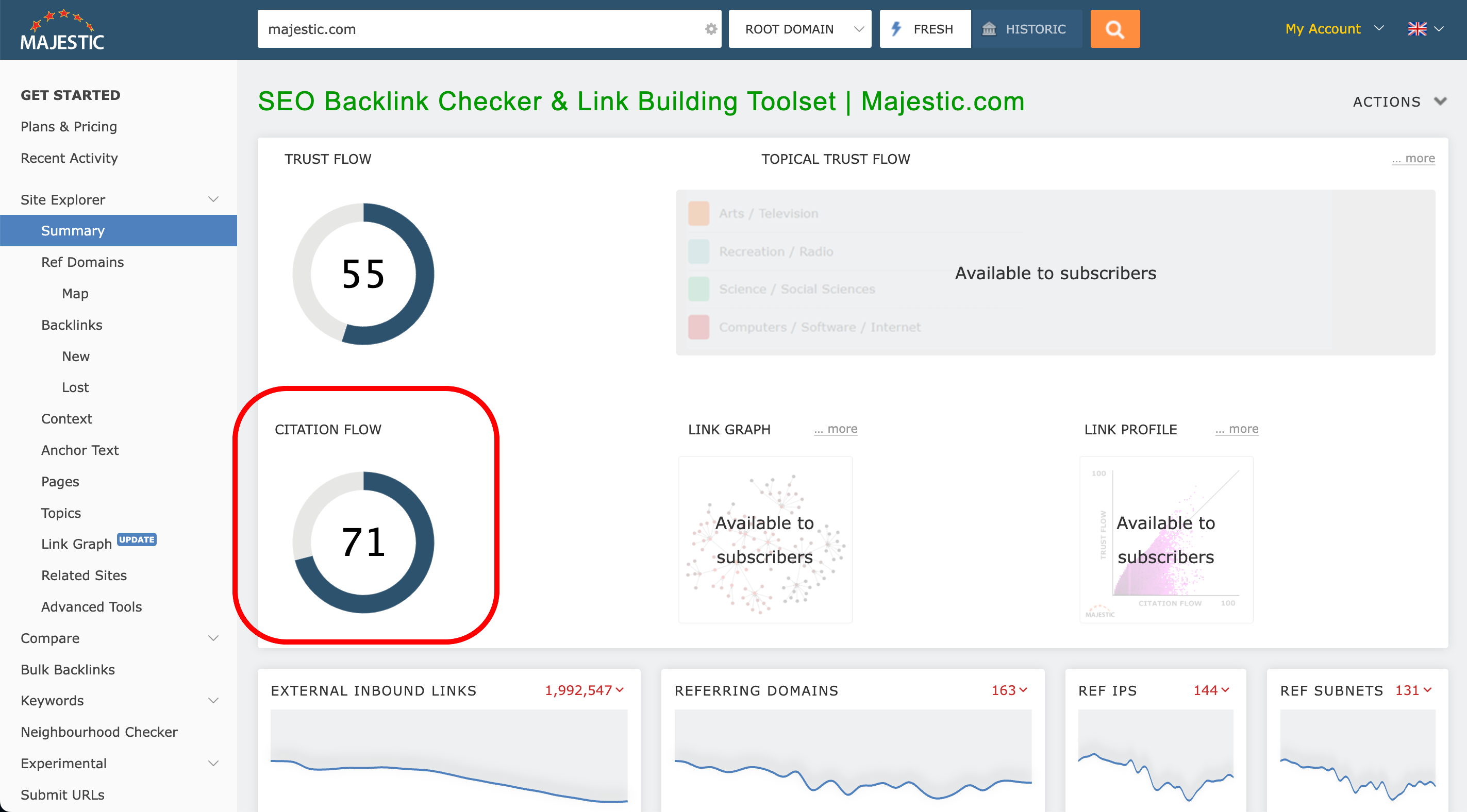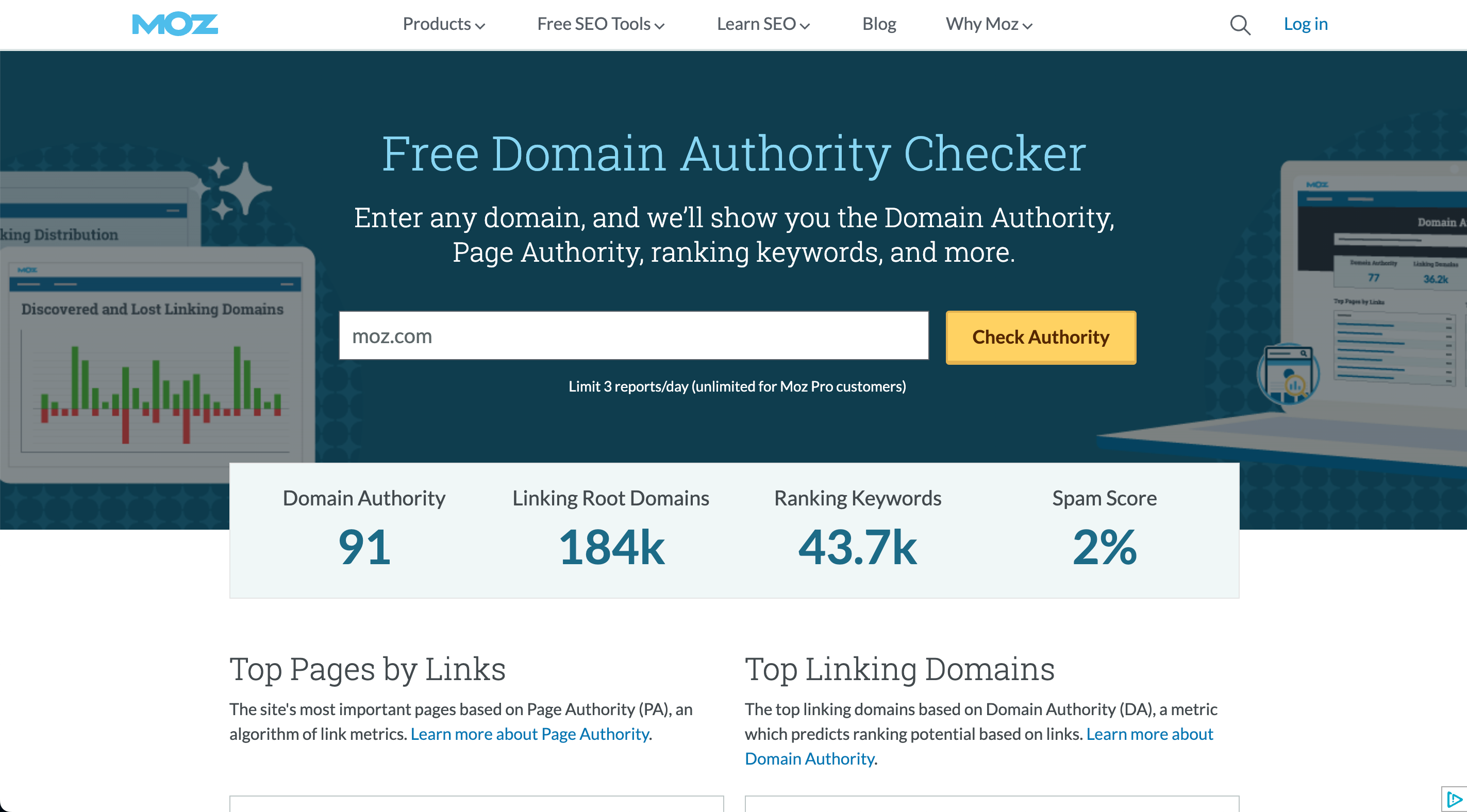What do CF, TF, DA, and DR scores mean in SEO? [Full Explanation]

by Kyle Samera on September 27, 2023
![What do CF, TF, DA, and DR scores mean in SEO? [Full Explanation]](https://cdn.sanity.io/images/ppduxil1/production/086e17cb1c7102f61128bb8af1a6e8c3ceedb728-1200x630.png)
In search engine optimization (SEO), acronyms run rampant and if you're new to the industry, it can feel like you're trying to catch up on a dictionary's worth of terminologies. These acronyms, however, are not just pointless jargon. They are critical components of SEO and can make or break your site's digital performance. Among the many acronyms you will encounter, the authority scores dubbed CF, TF, DA, and DR are some of the firsts you’ll encounter. But what do these abbreviations represent? And how do they affect your SEO?
TF (Trust Flow)

Trust Flow (TF), a Majestic SEO brainchild, measures the quality of links pointing to a website. This metric analyzes how trustworthy a site is by evaluating the quality of the links pointing to it.
A site with a high TF means it has a great number of reputable, high-quality backlinks. The TF score also runs on a scale of 0-100, where higher scores indicate higher trustworthiness.
CF (Citation Flow)

Citation Flow (CF) is a prediction of your site's influence based on the sheer number of links pointing to it. Also developed by Majestic, it essentially analyzes the link equity or "power" a website or link carries.
Understand that where CF is about quantity, TF is about quality. That means it’s far easier to influence with black hat methods than TF. The scale for CF is from 0-100, with a high score indicating strong link power.
Putting Together the TF/CF Ratio
Since both TF and CF are developed by Majestic, it’s important to acknowledge the ratio between them to better understand your presence.
So, what is considered a 'good' TF/CF ratio?
According to Majestic, the ratio should ideally be a 1/2 balance which would compute to 0.50. That means if you have a site with a TF of 20 and a CF of 40, you would expect to have a trustworthy site with good backlinks.
According to the images above, with majestic.com scoring a 55 for trust flow and a 71 for citation flow, they would have a TF/CF ratio of 0.714 which is over the target ratio of 0.50, meaning it's quite authoritative and has very trustworthy backlinks.
You can check your very own CF and TF by creating an account with Majestic for free and analyzing your domain.
DA (Domain Authority)

Developed by Moz, Domain Authority (DA) predicts how strong a website is by combining complex composite of metrics, including linking root domains and the number of total links, and a slew of other factors, to create a score on a scale from 0-100.
Higher scores are correlated with a stronger backlink presence on the internet. It’s important to note that DA is most useful as a comparative metric (i.e., comparing the DA of one site to another) and should not be used as an absolute score.
At Serpdrill, we prefer to use DA to find weak spots in SERPs because it accounts for more factors than other authority scores such as spam score, search competitors, featured snippets, etc. We believe this gives a better overall view of a domains strength.
DR (Domain Rating)

Domain Rating (DR) developed by Ahrefs, is a proprietary metric that shows the strength of a website's total backlink profile (in terms of its size and quality) and rates it from 0 to 100.
This metric uses a scale from 0-100, and similar to DA, it’s most effective when used as a comparative metric rather than an absolute score since Ahrefs checks the domain against it's entire database of backlinks to determine how the domain stacks up against others. A site with a higher DR means it has a strong, influential link profile.
Should I use DA or DR?
To be honest, you should be evaluating both of these. Each hold a slightly different take on what makes a website more authoritative in Google's eyes, and it's important to take into account all of them as a guide.
However, there are SEOs who prefer one over the other. DR supporters will say that DA can be fluffed up by factors that aren't central to Google's original PageRank algorithm. In contrast, DA supporters will say that because DR strictly accounts for a domain's backlink profile, it doesn't account for other factors that do actually matter for Google's modern ranking algorithm.
At the end of the day, you're likely going to have relatively similar scores for both if your site is producing well-structured content that answers users' questions so we wouldn't obsess too much on one over the other.
How Can I Improve These Scores?
Now that you know what these authority scores mean and how they’re measured. In short, it’s about building a better backlink profile for your site. Here’s how you can put your site in the best position to do so.
1. Create High-Quality Content
Unsurprisingly, you need to create high quality content so that other sites want to link to you. Relevant, well-researched content that provides valuable answers to user queries is likely to earn high-quality backlinks.
2. Purposeful Link Building
Being discerning and purposeful in your link-building strategy can make a significant difference. Aim for high-quality, relevant backlinks from reputable sites.
3. Disavow Poor Links
In the same vein as purposeful link building, you should be disavowing poor links from spammy sites using the disavow links tool from Google Search Console. It might result in a temporary drop in traffic, but those are likely visitors you wouldn’t want continuing to your site anyway.
4. Regular Content Updates
Regularly updating your content ensures your site stays fresh and relevant. When the algorithm sees that your content is current and useful, you’ll enjoy higher rankings.
5. Optimized On-Page SEO Efforts
Ensure that each page on your website is optimized for SEO - meta descriptions, alt tags, H1 tags, etc. A strong on-page SEO implies a well-structured site, which helps increase your site's DA and DR scores.
6. Maintain Healthy Link Profile
Monitor your site regularly to discard any harmful or irrelevant links. A clean link profile contributes to a better TF and DR.
7. Social Signals
A strong social media presence can indirectly influence your scores. High engagement rates, shares, likes, and comments indicate content quality and trustworthiness.
8. User Experience (UX)
Prioritize your site's UX. A user-friendly interface, fast-loading pages, easy navigation, and mobile compatibility are important for your site’s visitors.
Conclusion
Improving your website's CF, TF, DA, and DR scores is a critical aspect of SEO, directly impacting your site's visibility on search engines. Implementing a strategic SEO plan, consistently creating high-quality content, and fostering a reputable link profile can significantly enhance these scores. Remember, the journey of SEO is a marathon, not a sprint.
SEO success is not only about gaining high CF, TF, DA, and DR scores but also about maintaining them. As algorithms continue to evolve, it's important to stay updated with the trends. Thus, continuous monitoring, adjusting, and optimizing your site to adapt to these changes are key to sustaining a strong online presence.
Quick FAQs
Is it necessary to have high CF, TF, DA, and DR scores for better SEO?
No, but it’s an inevitable result. Having higher CF, TF, DA, and DR scores implies a better placement on search engine results because of good SEO, as these metrics indicate website credibility, relevance, and trustworthiness.
How much time does it take to improve CF, TF, DA, and DR scores?
Improving your CF, TF, DA, and DR scores is a continuous process and depends heavily on your SEO efforts. It will take several weeks, months or even years to see a significant improvement.
Are these scores the only important SEO metrics?
Definitely not. While these scores are important, there are also other metrics to consider, such as Page Authority (PA), Spam Score, and more. We will dive into these in a future blog post.